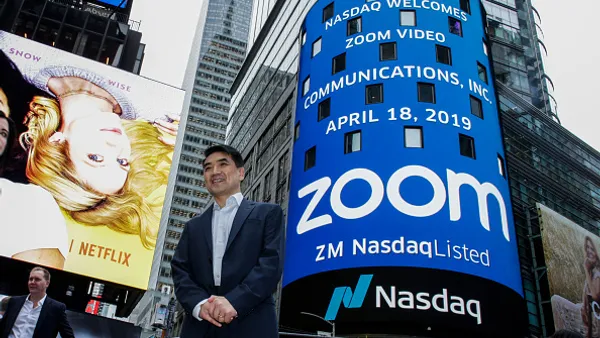Business leaders know how important it is to keep employees engaged year-round. During the busy summer months, work often takes a backseat to life outside of work. During summer, employers are faced with a variety of challenges to keep employees in office, engaged and present.
After the vacations, summer camp schedules and the coveted summer Fridays come to an end, employers have a huge opportunity to start fresh with new energy aimed at engagement. Many years of research show that engaged employees are, among other things, more productive, creative and have higher retention rates. As a result, companies with highly engaged employees are more profitable.
Despite engagement being critical to business success, employee burnout is on the rise, affecting nearly half of the women, Gen Z and millennials surveyed. The June 2023 Gallup poll found that 59% of employees are disengaged and although they fulfill their minimum job responsibilities, they aren’t going above and beyond expectations. In addition, eighteen percent are “loud quitting,” or actively disengaged. In all, Gallup reported that less than one-quarter of employees are engaged at work.
While the remaining three-quarters of employees may do their jobs, they are not bringing the innovation and creativity necessary to create a competitive advantage. Employees who aren’t engaged are also more likely to quit and that cost is steep. Each year, quiet quitting alone costs U.S. businesses $450 to $500 billion.
Successful businesses compete by offering great products and services–but this is difficult to do when 75% of the workforce isn’t motivated to perform their best. The challenge of motivating employees is even greater right now when many businesses are requiring their remote employees to return to work onsite– at least some of the time.
A changed workforce
The workforce has undergone tremendous change in the last three years. While many businesses are back in “let’s get it done” mode, the same ways of managing aren’t as effective as they used to be.
“Leaders must recognize that they need different strategies to manage employees who work remotely, hybrid, or in person,” said Jamie Viramontes, CEO of Konnect, a Human Resources company. “Those employees–regardless of where they sit, have significantly different expectations than they did a few years ago.”
During the pandemic, companies rapidly adopted technology enabling many employees to work from home. Viramontes said that now, those employees want continued flexibility and work/life balance. They want more autonomy and respect for their time. Why should they go into the office simply to be on Zoom meetings all day? They’re vocal about expectations and after witnessing social injustices, they want greater transparency into company policies and decisions. More than ever, they want to know the causes their organizations support and if they align with the employees’ values.
Viramontes added that the office dynamic has changed in other ways. “Today’s businesses have new generations of employees who never worked in an office environment before. Additionally, many companies have a multigenerational workforce with different needs and priorities.”
Although employees aren’t quitting jobs at the rate they were a few years ago, businesses must still work to keep their best talent.
With the many shifts in the work environment, leaders can’t ignore disengagement. Instead, they must find ways to help employees rebuild relationships, excitement and interest in the job and company.
Connection: The first step to re-engagement
Businesses use surveys, team building, company outings and other activities to create engagement– with mixed results. Leaders try to engage employees to retain talent and build culture, but the first step they should take is to connect with employees. And there is no better time than now, the few weeks when school is back in session and schedules are returning to normality.
What is connection? Viramontes said, “it’s the trust an employee has for the leader, when the employee feels they fit and belong. It develops when leaders show they genuinely care about their people, and what their people value.”
Each employee may value something different, he added. Leaders show that connection by understanding and recognizing those differences. Although many leaders do this, not all of them take it to the next critical step: communication with employees.
Viramontes suggested these three tips to help leaders connect.
Have deliberate conversations. This aspect is one that leaders often overlook. It’s not intentional, but in day-to-day busyness, managers forget to establish key connections with the individuals on their team. In meetings for example, we often jump right into the topic so we don’t waste anyone’s time. That’s an understandable concern but having a connection will not only create a more collaborative environment but will help foster continued positive work experiences. Allow extra time for casual conversations when scheduling meetings. Create schedule buffers so you can spend an extra 5-10 minutes chatting with your teams or colleagues.
Connections require a two-way stream of information. Ideally, the impetus to connect comes from the top down, however, leaders at any level can and should make it their priority. Listen to feedback without being defensive. Use this information to understand what drives employees and what kind of support to offer.
Make authentic connections. When we approach these conversations authentically, we build trust, foster collaboration and encourage open communication. Genuine connections allow us to understand and appreciate each other's strengths, perspectives and experiences that lead to increased job satisfaction, teamwork and a shared sense of purpose.
Keep connecting, especially as the business grows. It’s good when a company expands. But the culture that created that success needs to keep growing. Without connections woven throughout the company, it is nearly impossible to ensure that a winning culture continues to develop.
Viramontes said that engaged employees feel seen, heard, understood and appreciated. “Leaders who connect with their employees, even starting in simple ways, set the foundation for employees to feel motivated and invested in their job, team and company.”










